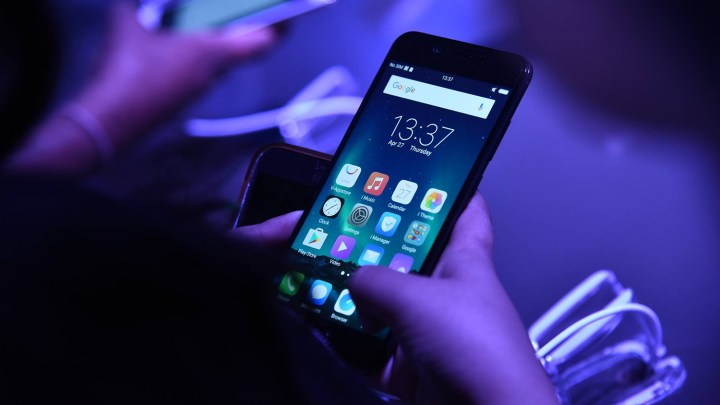
It made its intentions clear during Mobile World Congress Shanghai. In partnership with chipmaker Qualcomm, Vivo revealed the first public demo of a prototype smartphone with on-screen fingerprint recognition. Since then, further private demos show the tech has improved greatly.

How does it work?
Ultrasonic signals pass through the OLED display, identifying the raised sections of an individual’s finger which generate a response on the receiver, while the grooves will not, creating a unique print that can be read even underwater.
It’s an exciting breakthrough, but perhaps not quite ready for prime time yet. Engadget, which provided the image seen above, tested the device on the show floor and reported a discernible amount of lag between applying the press and unlocking. Furthermore, the space on screen from which the fingerprint could be recognized was quite small, though Vivo claims it can be enlarged in future iterations.
Some time later, an industry analyst met with Vivo and tried out an updated version of the technology, using the newly announced Synaptics Clear ID system. The analyst calls the unlocking procedure, “fast and simple,” in a report published by Forbes. He describes the requirement of pressing a side-mounted sleep/wake key first, then touching a fingerprint image on the screen to enter the device’s operating system. The device didn’t have an automatic wake-up mode — hence the button press — but this may arrive on a future version. The demo phone at MWC Shanghai was reportedly a modified version of Vivo’s Xplay 6.

Earlier Vivo fingerprint rumors
In June, rumors began with a post on the Chinese social networking site Weibo from industry analyst Jiutang Pan. The video, discovered by Android Authority and linked above, showed a Vivo device being unlocked through on-screen fingerprint recognition. Pan said the phone could make it to market in the coming months, before the next flagship iPhone’s presumed fall reveal.
Vivo has a history of being at the forefront of new mobile technology. This includes the Vivo X3 — the world’s thinnest smartphone at the time of release, measuring just 5.75 millimeters thick. Last November, it brought the very first phone with 6GB of RAM to the market in the form of its XPlay 5.
Will it follow those achievements up with an even greater one? Only time will tell. Vivo has also made strides to launch its hardware internationally in 2017, which may give those outside China a chance to try the device for themselves after release.
Update: Added in comments from a private demo of Vivo’s on-screen fingerprint scanner.


